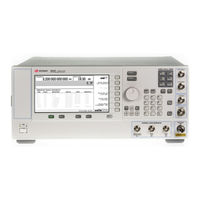Keysight E8367D Manuals
Manuals and User Guides for Keysight E8367D. We have 1 Keysight E8367D manual available for free PDF download: User Manual
Keysight E8367D User Manual (312 pages)
PSG Signal Generators
Brand: Keysight
|
Category: Portable Generator
|
Size: 3 MB
Table of Contents
Advertisement
